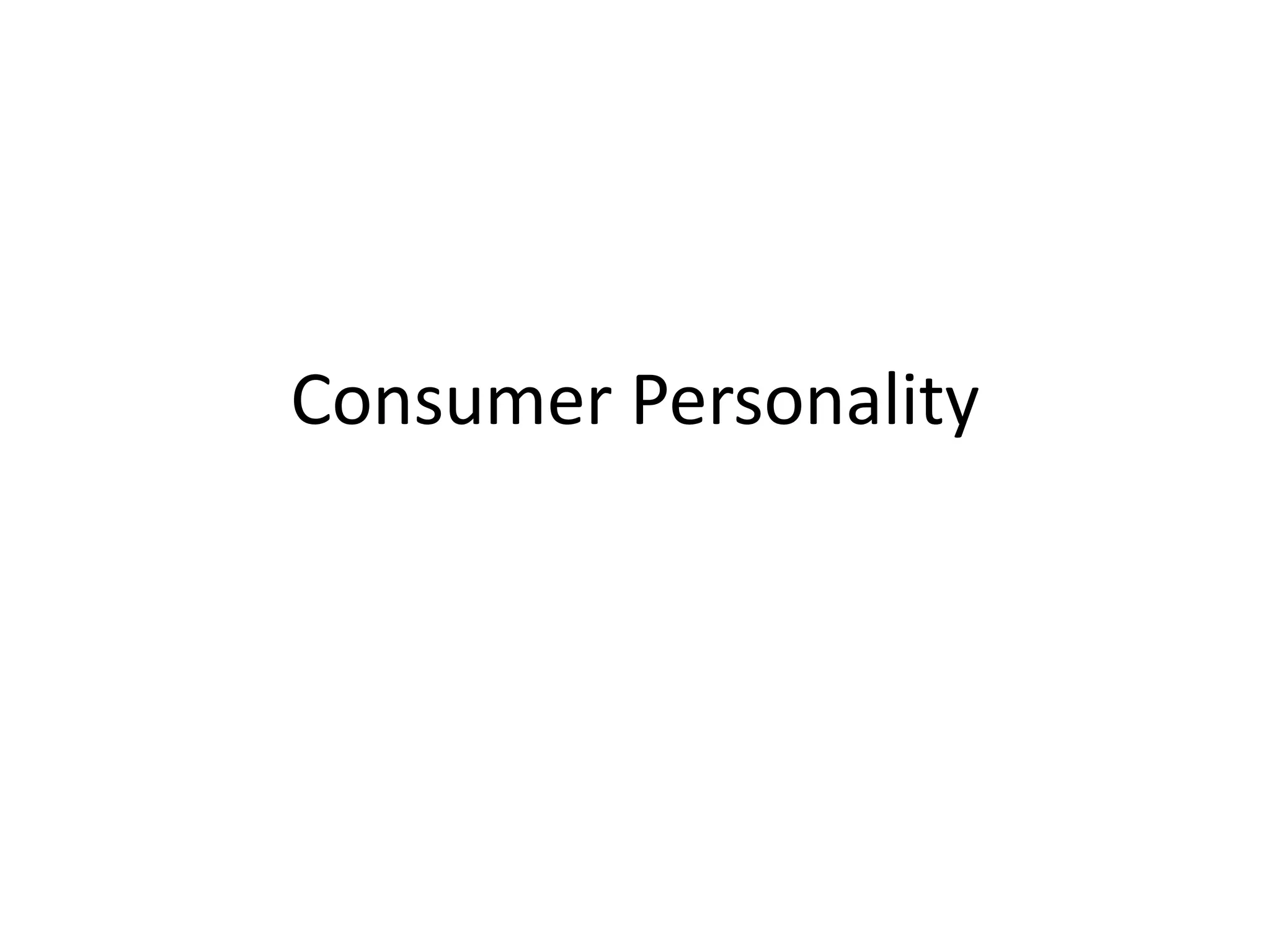This document discusses theories of consumer personality that are relevant for marketers. It describes four main theories: self-concept theory, psychoanalytic theory, social/cultural theory, and trait theory. For each theory, it outlines key concepts and how they relate to consumer behavior. The document also discusses how personality traits may influence consumer choices but notes the evidence is mixed on the practical value of personality for marketers.










































